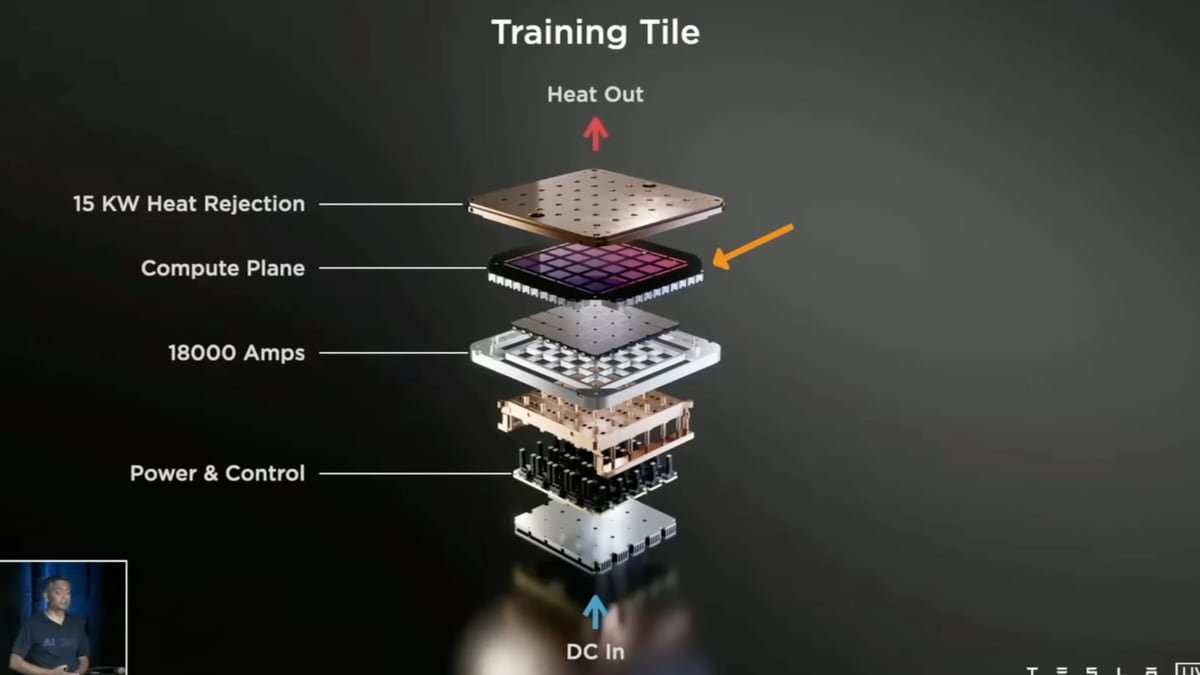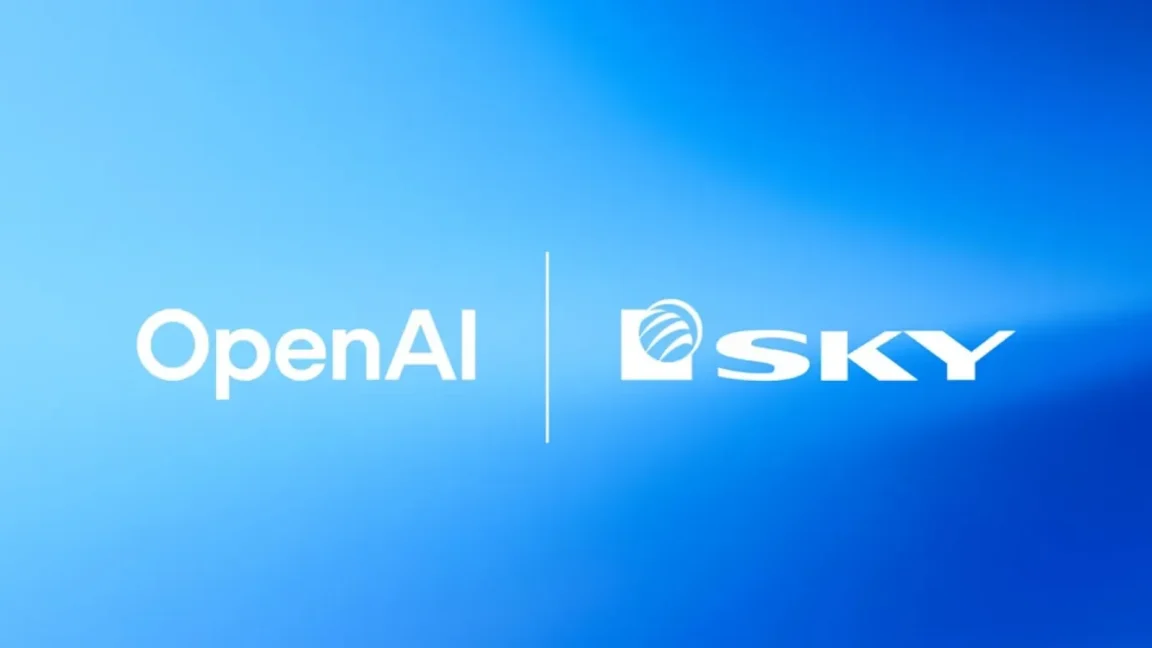By Karan Singh

Headlines from Bloomberg paint a dramatic picture: Tesla is disbanding its Dojo supercomputer team, its leader is leaving, and a key AI effort has been unwound. On the surface, it’s a shocking development for a project that analysts once suggested could add $500 billion to Tesla’s value.
However, a closer look at the details, including some direct comments from Elon Musk and our own research, suggests that this isn’t a story of doom and gloom, but instead a pivot towards what Tesla has already said they intend to do.
So, is Dojo really dead? The answer is more complicated – and far more interesting – than a simple “yes.”
The Scoop: What’s Being Reported
The report, citing people familiar with the matter, lays out several key developments. It states that Tesla is fully disbanding the Dojo team, and that its highly respected leader, Peter Bannon, is leaving the company.
The remaining team members are reportedly being reassigned to other data center and compute projects within Tesla. The report concludes that Tesla plans to increase its reliance on external partners like Nvidia.
Elon’s Case: Convergence, Not Cancellation
While the changes are real, Elon’s own confirmation on X frames this not as a cancellation, but as a strategic refocusing. His explanation cuts right to the heart of what Tesla is actually intending to do.
It doesn’t make sense for Tesla to divide its resources and scale two quite different AI chip designs.
The Tesla AI5, AI6 and subsequent chips will be excellent for inference and at least pretty good for training. All effort is focused on that.
— Elon Musk (@elonmusk) August 8, 2025
This is the key to understanding the entire move. The problem wasn’t Dojo’s potential, but the inefficiency of developing two separate, specialized AI chips in parallel: one for training (Dojo Gen 1), and another for inference in the car (the AI6 chip).
AI6 is the Next Generation of Dojo
This pivot to a unified architecture isn’t a surprise, but a logical next step in the roadmap we’ve already been tracking. Elon’s clarification on using a single path forward makes sense – he said exactly as much as this just last month. The upcoming AI6 chip was always intended to be the next generation of Dojo technology, integrating the Dojo supercomputer chip architecture directly into their in-vehicle hardware.
Furthermore, the idea that the entire Dojo program is just being unceremoniously scrapped contradicts other recent news. Tesla is just bringing the Dojo V2 chip into mass production, which is to help bolster their current training capabilities in the gap before the next-gen converged hardware becomes ready.
This unified path is made possible by the sheer power of Tesla’s upcoming chips.
The difference in real-world performance between AI4 and AI5 is far more than any chip version I’ve ever heard of by a lot.
It’s real good.
— Elon Musk (@elonmusk) August 8, 2025
Elon also mentioned that Dojo isn’t quite dead yet as a Supercomputer. Its spirit will live on, using the next generation of vehicle chips.
In a supercomputer cluster, it would make sense to put many AI5/AI6 chips on a board, whether for inference or training, simply to reduce network cabling complexity & cost by a few orders of magnitude. One could call that Dojo 3, I suppose.
— Elon Musk (@elonmusk) August 8, 2025
This confirms the convergence strategy – the next generation in-vehicle chips are going to be so powerful that Tesla’s next supercomputer cluster will simply be a massive cluster of the very same chips.
Disbanded? More like Realigned
With this context, the news of a disbanded team takes on a new meaning. The strategy is now fully focused on the unified and converged AI6/Dojo V3 architecture, and it is logical that the dedicated team working on the now-legacy Dojo V1 and Dojo V2 architecture would be realigned. This appears to be a shift of talent from a concluded project to a new, primary mission.
Peter Bannon’s departure, while significant, likely coincides with this major strategic shift in the program he was instrumental in building. While the headlines may scream that Dojo is dead, the reality is far more nuanced. Tesla is not abandoning its goal of creating custom silicon for AI training – it is refining it. The company is converging its two separate and distinct AI chip designs into a single, unified architecture with AI6. This will let them train and run FSD on the same chips, reducing the feedback loop.
This move will simplify development, accelerate the training process, and focus all of Tesla’s talent towards a single goal. The era of Dojo as a standalone supercomputer project may be over, but its spirit, architecture, and the talent behind it will go on to become the core of Tesla’s AI future.
By Karan Singh

Tesla is seriously bolstering the Cybertruck’s off-road cred with the official launch of the highly awaited Terrestrial Armor Package, now available on the Tesla Shop in the United States and Canada. This package, which was first announced back in 2024 and delayed several times, provides significant underbody and side protection for the Cybertruck, turning it into an even more capable vehicle for challenging terrain.
Protecting the Vitals
For any serious off-roader, protecting a vehicle’s vital components is paramount. The Terrestrial Armor Package is designed to do just that. The rock sliders are engineered to protect the vulnerable rocker panels along the sides of the truck from rocks, stumps, and other trail obstacles.
Meanwhile, the body armor is a heavy-duty skid plate that armors the underbody battery area – the Cybertruck’s most critical component – from damaging impacts from below.
Built for Durability
Tesla has engineered the components with durability in mind. The rock sliders are made from an e-coated steel for rust resistance, and are covered with a durable bed-line coating to withstand scrapes and impacts.
They are designed to look similar to the factory appearance, maintaining the Cybertruck’s sleek and simple aesthetic. Their installation does require the removal of the rear aero flap, which is a common modification for any off-roading anyway.

The body armor consists of a 15 mm-thick aluminum plate with a crush core to absorb impacts. It’s designed to protect the battery area, but it does result in a slight reduction in overall vehicle clearance.
Most importantly, this is additive to the existing base battery armor, which is exceptionally resilient by default. You can check out this video that goes over off-roading with the stock skid plate and then with the armor installed.
Two months ago, Tesla gave me early access to their Rock Sliders and Body Armor. I’ve tested it out, in a lot of different types of terrain all over the Pacific Northwest. Here’s my long(ish) term review
Feel free to ask me anything in the comments, I’ll try and keep on top of… pic.twitter.com/jX9Cux2t2v
— O G R E → Dennis (@ogre_codes) August 8, 2025
Price, Weight, and Availability
The complete Terrestrial Armor Package is priced at $3,500 USD or $4,770 CAD, and crucially, includes professional installation and shipping to your local Tesla Service Center. While no service documentation has been released for this in particular, we’re expecting that the install should take about 3 to 6 hours, based on related documentation.
The total weight of the package comes in at 185 lbs (88 kg) and should have no noticeable impact on vehicle range. The driving factor of range is usually aerodynamics, and the removal of the rear aero flap likely has a larger impact on range than the weight of the armor itself.
Currently, the package is exclusively available for Foundation-Series owners as a thank-you for their early purchase. It will become available for all other Cybertruck owners sometime in September.
What’s Next for Off-Roaders?
With the armor package now available, the next major accessory on the wishlist for many owners will be the Off-Road Lightbar. The Lightbar is still rolling out for Foundation-Series Cyberbeast owners, and its wider release has been hampered by supply issues related to the lightbar itself, as well as the epoxy required for its installation.
Looking further ahead, the launch of the armor package opens the door for what Tesla could be offering next for Cybertruck off-roaders. Integrated winches, a custom roof-rail system that expands on the currently available rails, or other exterior lighting could all be excellent OEM accessories that Tesla could potentially launch.
By Karan Singh

Have you checked for the Battery Health test in your Tesla lately? For some owners, it may still be there, while for others, it has been removed. The useful diagnostic tool that shows your high-voltage battery pack’s health has mysteriously vanished.
In a recent undocumented change with software update 2025.26, Tesla has removed the battery test from the Controls > Service menu and Service Mode from some vehicles.
The Disappearance: A Trail of Clues
Instead of a simple removal, the availability of the Battery Health test seems to now depend on a combination of the vehicle’s model, age, and test history.
Clue #1. The test has been removed from many, but not all, newer vehicles. The option, previously found under Controls > Service > Battery Health, is completely gone for many owners on 2025.26. This has been confirmed on multiple 2025 Model 3s, as well as a 2024 Model S.
Clue #2. The test is read-only for a number of older vehicles. On some 2018 Model 3s that have run a test in the past, the menu option remains, but only displays the previous test results. This includes vehicles that have passed the 6-month minimum between tests. While owners can view the results of the previous battery test, they cannot initiate a new test.
Clue #3. The battery health test has been completely removed for everyone. There are a few vehicles that still have access to it. We’ve confirmed this on a 2025 Model Y, running 2025.26.4, which has never run the test before.
Clue #4. The test has also been completely removed from the Cybertruck, including the results for those who had run the test before. There is no read-only history available on these vehicles, and the whole feature has just been removed.
The End of On-Demand Testing
Perhaps the most significant change for everyone is the fact that Tesla has also removed the on-demand version of the test from the user-accessible Service Mode. Previously, owners could enter Service Mode and run the HV Battery Self Test at any time. As of 2025.26, this option has been completely removed from the menu, even on vehicles that can still access and run the test from the main Controls > Service > Battery Health screen. While the Battery Test could only be run every six months through the main service menu, Service Mode does not have these restrictions.
This is interesting because Tesla provides release notes for Service Mode, which are usually pretty thorough, but they don’t mention the removal of the Battery Health Test from Service Mode.
Tesla also offers a premium, subscription-based feature called Service Mode Plus, but it is unclear whether the battery test has been removed from there as well. Some Service Mode features have been moved over from Service Mode to the paid tier, so this may be one of them as well.
Why the Removal?
Why would Tesla remove a popular and transparent diagnostic tool? While we don’t have any official word on the removal yet, there are a few possibilities.
It could be that Tesla is working on revamping the battery health tool. This could be preparation for a more sophisticated and accurate diagnosis tool in the near future.
Alternatively, it could be because some of the results weren’t as accurate in certain batteries or vehicles, or that it was causing confusion or prompting an increase in service visits from owners concerned about their battery degradation, even if it was in line with expectations.
For now, the removal of this tool is a bit puzzling, but we’ll be keeping a close watch to see if a replacement feature emerges or if Tesla rolls this back.
If you’d like to check whether your vehicle still has the battery health test tool, check out our battery health guide, or our Battery Health Test guide for Service Mode.


